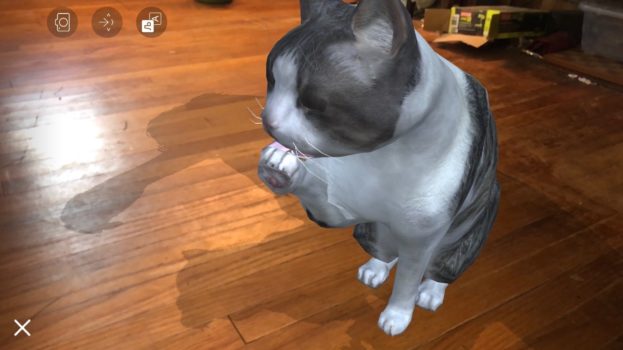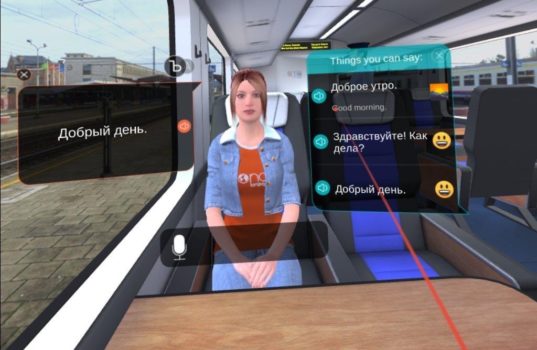
Looking to learn a new language, or to have some fun brushing up on a language you’re already familiar with? With so many apps available nowadays, how do you know which one to pick?
Mondly’s an app I recently tried, and if you’re looking for an immersive language learning experience, I recommend you take it for a spin yourself.
Originally released in 2014, and available on PC, iPhone and Android, Mondly has expanded into the VR and AR world with some good results.
Mondly VR, released in 2017, is available on the Gear VR, Oculus Go, Oculus Rift, Google Daydream ad Google Cardboard, with plans on expanding to Steam, Playstation VR and Oculus Quest.
Mondly AR, released in 2018 as part of the main Mondly language learning app, and this month relaunched as a stand alone app, is available on the iPhone, iPad, and on Android.
I tried Mondly VR on my Oculus Go and Mondly AR on my iPhone, and found a lot to like about both apps.
With so many language learning apps available, why try Mondly? I called the company and asked them.
“Mondly VR is a simulation of reality — the most immersive way to learn a language without having to leave home,” Ramona Tampa, Mondly’s digital marketing specialist, told Hypergrid Business. “With Mondly VR, users can learn 33 target languages from 33 mother languages, in virtual reality. The application combines advanced chatbot technology and speech recognition in order to create a new, revolutionary way to learn languages,” said Ramona Tampa, Digital Marketing Specialist at Mondly, in a recent interview with Hypergrid Business.
Many language learning apps are targeted towards native English speakers, but with Mondly any one of those 33 languages can be selected as your native tongue.
In both the VR and AR version, a virtual teacher has conversations with the learner, processes what you say, and offers feedback on my pronunciation or telling me to speak louder in some cases so she could hear me.
“After language learners know a language in theory, they are faced with possibly the biggest setback — finding the courage to speak it in real life,” said Tampa. “So we set out to create a new, tech-driven learning environment for them. Â With Mondly VR, we want to give every language learner the one thing they want after learning a language — the confidence to speak it.”
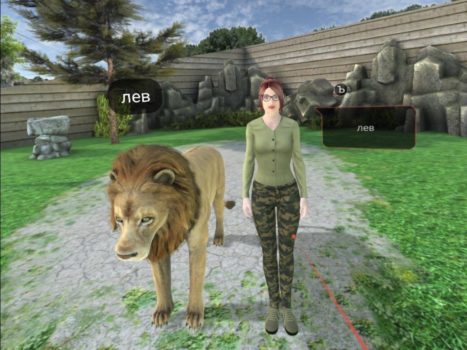
I thought I was a good test subject for Mondly VR and AR. Â Even though I was born in the U.S., my parents moved here from the former Soviet Union before I was born, and I grew up speaking Russian as a young child. Â But eventually I ended up just speaking English, and my Russian vocabulary and communication skills quickly went down the drain.
I find myself feeling uncomfortable talking to native Russian speakers, as it was my first language and I feel that I should be far more fluent than I am.
I figured Mondly VR would be a good way to brush up on my vocabulary and try out some conversations without the embarrassment I would normally associate with talking to somebody from my parents’ homeland.
There are a number of scenarios in which I could practice vocabulary and conversational skills.
I hung out at a virtual grocery store learning the Russian names of different fruits and vegetables, then I went to an outdoorsy setting and went through a bunch of different animals, and also took a trip into outer space to practice some vocabulary, all guided by the trusty virtual assistant.
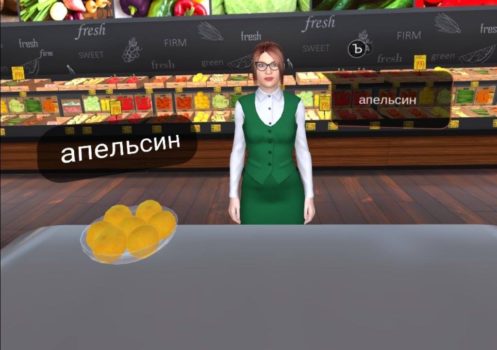
After brushing up on some long-forgotten words, I decided that it was time to have some conversations. Â I practiced talking to people in a taxi cab, at a hotel reception desk, and on a train.
Mondly offers some suggested phrases that you can speak, or you can hide the suggestions and try to figure out a response on your own. I tried both ways, since I do still remember a little Russian, and it worked great.
I spoke my phrases into the mic and it understood me perfectly. Since Russian uses the Cyrillic alphabet, it might be hard to read the phrases for somebody who doesn’t know the language at all, but you can also view it in English text written out phonetically, which is very helpful for beginners.
I tried pretty much the same experiment with Spanish, a language I took for five years back in my high school days, and met with equal success. Â I remembered some long-forgotten words and phrases, and learned some new ones in the process.
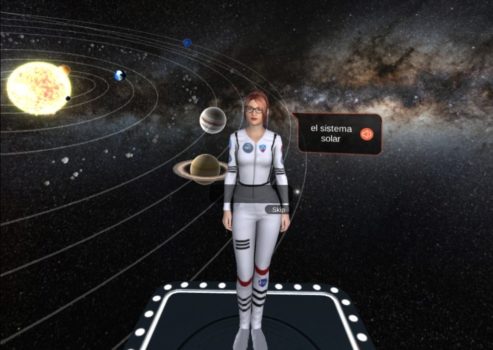
“With Mondly VR, by simulating conversation within a variety of real-life scenarios, users are taught relevant conversational skills,” said Tampa. “This way, they can apply what they know in the real world, not only because they know what to say, but also because they have the confidence to say it. Â They can talk in their target language without the fear of sounding silly.”
I didn’t feel silly at all, and I brushed the cobwebs off some languages I haven’t used in a long time. Â I might even feel bolder the next time I attempt to talk to a native Russian or Spanish speaker.
What didn’t I like so much?
I tried out a couple of languages that I’d never studied at all, Finnish and Dutch. Â Learning a few vocabulary words was helpful, and all the voice recordings are very high quality. Â You do receive feedback on pronunciation as well, but I found once I tried holding a conversation, I had a hard time.
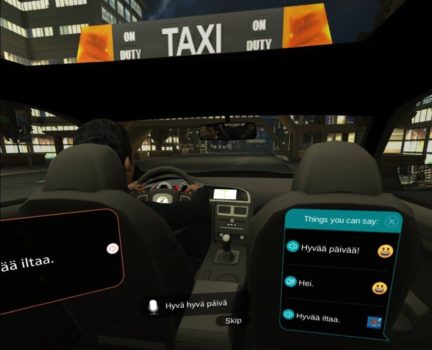
I got in a virtual taxi cab, and couldn’t get the taxi driver to understand anything I said. Â This might make conversations in some languages difficult for a new learner who has no experience with them, but somebody who’s somewhat familiar with the language probably wouldn’t have too much difficulty.
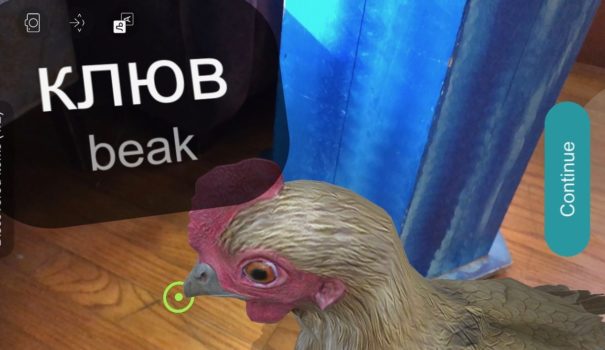
After playing with Mondly VR, I went over to Mondly AR on my iPhone, and had a lot of fun with it. Â I loved seeing various virtual animals projected onto my living room floor and it was great being able to walk up to and all around them. I could also hear the names of different parts of the AR animal I was seeing, such as the ears or eyes, described in English and the language of my choice when I got up close.
The interactivity of the AR app is really cool, and I had fun with it. Â I think kids definitely would too, and this might help maintain focus for some who find the traditional language learning classroom environment a little stale.
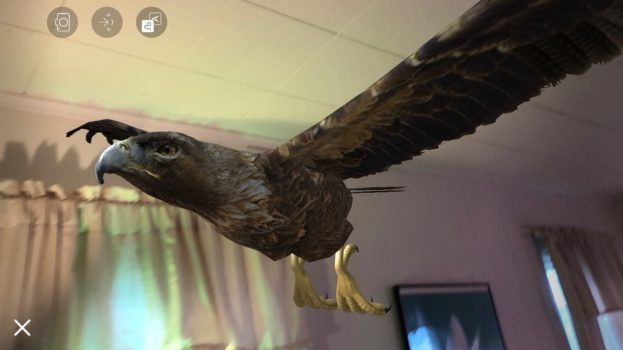
I didn’t love that the app on my phone keeps constantly trying to get me to upgrade to the premium version, but the free version is fun enough, and it offers regular vocabulary and conversational practice as well, similar to the VR version, just on the phone screen.
While there are a lot of good language learning options out there, Â I think both Mondly VR and Mondly AR are worth a try. They’re immersive, educational and entertaining.
“Our aim at Mondly is to build bridges and unite people all over the world, through innovation,” said Tampa.
And I did enjoy the Mondly experience more than a lot of my traditional language education classes.
There is still room for improvement: In both the AR and VR version I found the virtual assistant’s voice to be overly robotic a lot of the time, and beginning language learners might have a difficult time navigating some aspects of the app, especially the conversational portions.
Overall, I had a good time with Mondly, and it’s great seeing an educational app using VR and AR to enhance the language learning experience.
